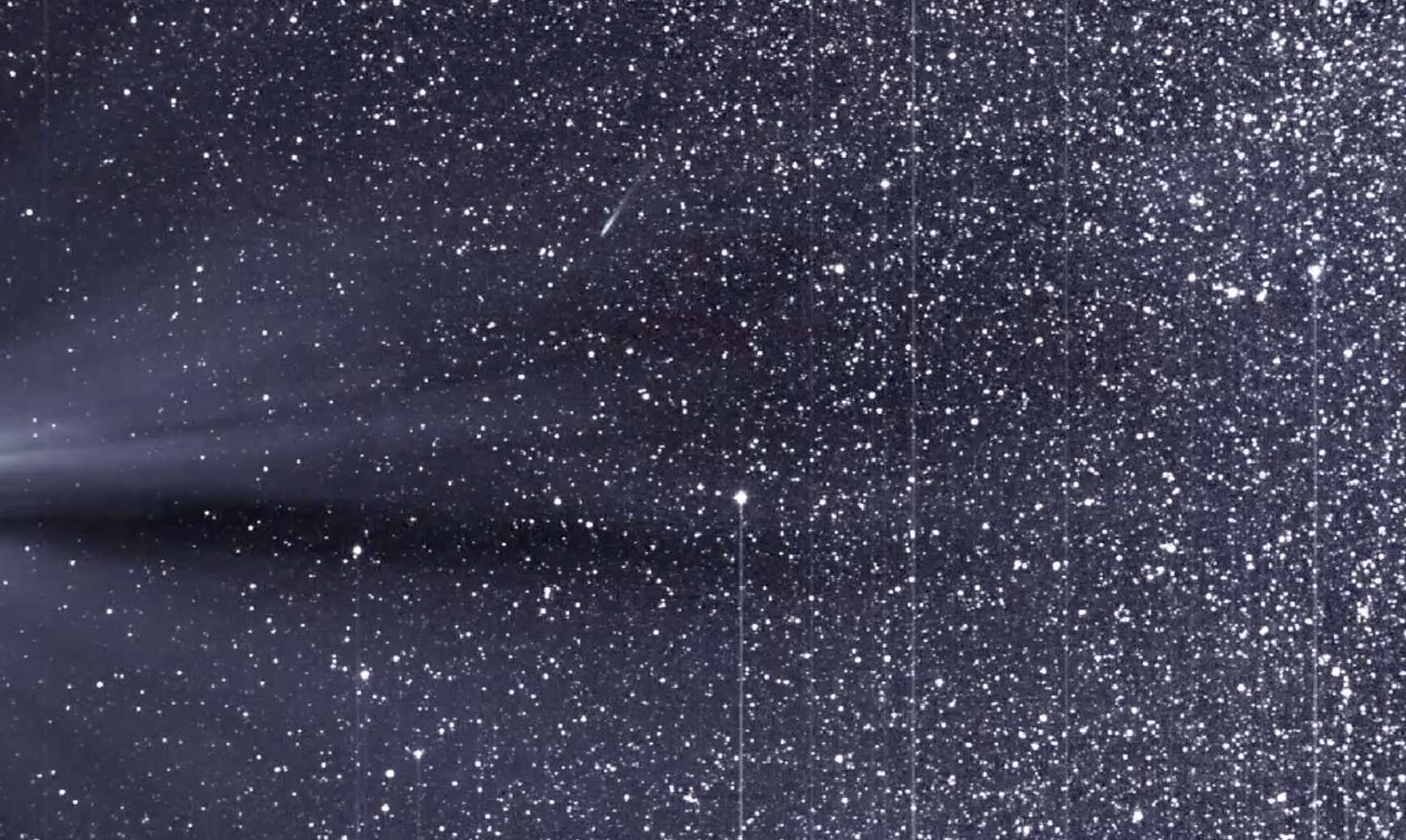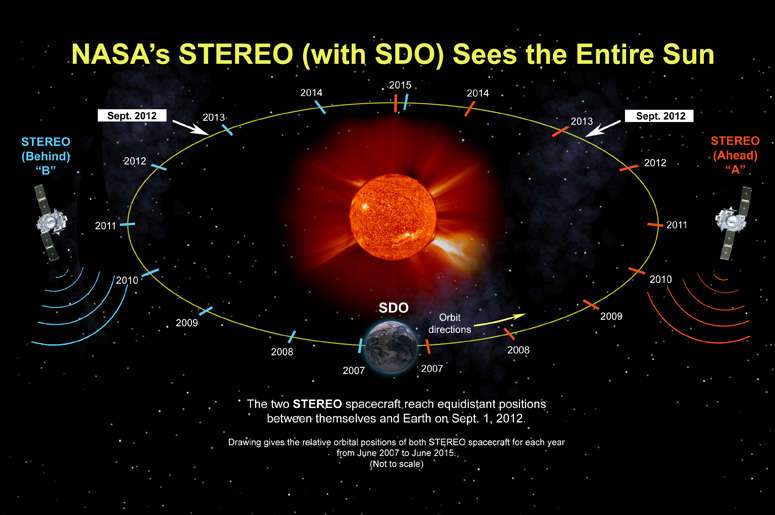Create a free profile to get unlimited access to exclusive videos, sweepstakes, and more!
NASA's STEREO-A observatory crosses paths with a comet, solar wind, and Mercury

Visionary stargazers like Jules Verne and Georges Méliès could probably not have imagined anything more spectacular than these new images of outer space captured by NASA's intrepid STEREO-A space probe.
Featuring a breathtaking array of heavenly activity, the brief animated video view below shows off what wonders the Solar Terrestrial Relations Observator (STEREO-A) spacecraft recorded as it streaked past the Sun from May 25-June 1.
Like something out of a fantastical 19th century sci-fi novel, it's an inspiring tableau containing the elements of a shimmering solar wind, the white plumed tail of comet ATLAS, NASA/ESA's Solar Orbiter cutting across the cosmic snowball's wake, and the glaring dot of the planet Mercury. This spectacle was obtained by the satellite's Heliospheric Imager (HI) showing a 20x20-degree field of view, with the Sun off screen 5-degrees to the left.
In the busy animated images above, comet ATLAS plummets from the top of the frame toward the bottom left corner and steers straight at the Sun. Observed off camera to the left, our star ejects a constant torrent of solar winds. The comet's dust tail is illuminated in white, courtesy of the Sun's shining rays.
Mercury is also visible as an illuminated sphere emerging from the left slightly above the solar outflow, set against a stationary starfield. Sharp eyes will see what seems to be a tail on Mercury, similar to what's observed on a comet, but it's just an illusion formed by the solar wind streaming over the planet and creating a trail of gasses. Vertical bands and slight horizontal lines emanating from the brighter stars are caused by diffraction from the telescope's optics.
Launched back in February of 2020, NASA/ESA's Solar Orbiter, which dives down from the left as comet ATLAS streaks out of frame, wasn’t actually scheduled to begin its science operations until June 15, but scientists changed Solar Orbiter’s testing schedule and lit up its four most appropriate instruments for the rendezvous with the comet.
This marks the very first time a comet tail crossing occurred by a probe or spacecraft not specifically intended to chase it down beforehand.
Originally deployed back in 2006 as a pair of solar observatories, STEREO-A and STEREO-B were to provide stereoscopic images of the Sun while parked at different locations along their individual heliocentric orbits. This enabled the pair to snap photos of various far-side angles of the Sun not visible from Earth as they achieved varying degrees of separation over the years. These two STEREO satellites mainly monitored the Sun's far side for coronal mass ejections, which are powerful bursts of solar wind, solar plasma, and magnetic fields projected out into interstellar space.
Due to power loss and a cutoff of communication when it went into a spin and its solar panel array became non-functional, NASA terminated its recovery operations on STEREO-B on Oct. 17, 2018.
Comet ATLAS was first found on Dec. 28, 2019 using images obtained by the Asteroid Terrestrial-impact Last Alert System (ATLAS) robotic astronomical survey system in Hawaii. Originating from the mysterious Oort Cloud that surrounds our solar system, ATLAS follows an orbit that takes it past the Sun every 6,000 years, but astronomers believe the comet is in a state of deterioration and probably won't survive for a return visit.




























